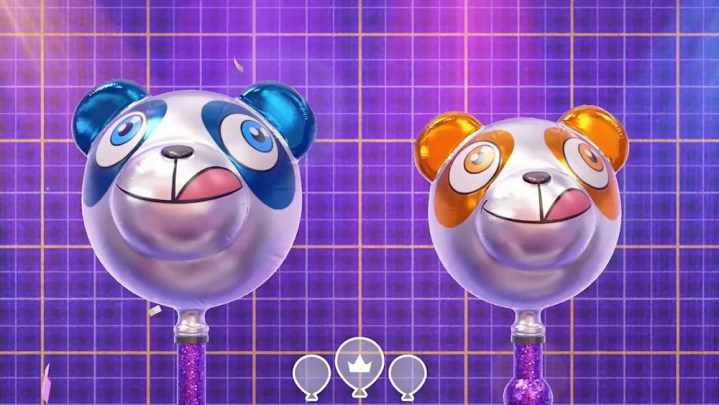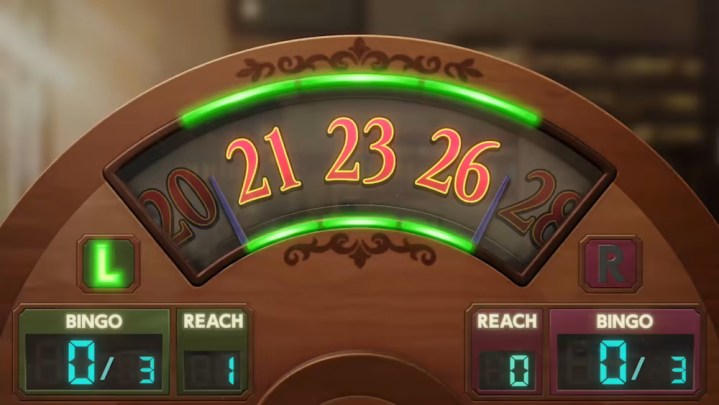Even if you’re a big Nintendo fan who follows the game maker religiously, you might not know that Everybody 1-2-Switch! is launching in three days.
The sequel to the Switch’s oddest launch game — the motion-controlled minigame collection 1-2-Switch! — has been all but buried by its own publisher. It was surprise revealed only a few weeks ago (late in the evening for East Coasters) with an announcement tweet containing no trailer or real details. The store page for it only contained a single, confusing screenshot of real humans pumping down Joy-Cons on a flat pink backdrop.
It wouldn’t even appear in Nintendo’s 40-minute June Direct, with Nintendo instead hyping a completely different motion-controlled party game during the show, WarioWare: Move It. To top it all off, it does not appear that review codes were sent out to media ahead of its release. Instead, press and content creators were invited to an in-person demo event for a controlled, one-hour hands-on session. The embargo for that coverage lifts today, three days before its launch — a day where you’d usually expect reviews.
https://twitter.com/NintendoAmerica/status/1671262945441992711
All of that might have you rightfully nervous, or at least morbidly curious, about what in the world is going on with Everybody 1-2-Switch! Personally, I was especially curious after reading a 2022 Fanbyte report that chronicled the game’s troubled development cycle, a story that claims its localizers internally nicknamed the sequel “Horseshit” during development.
What I can tell you after my hands-on session is that Everybody 1-2-Switch! does contain some fun, silly minigames that feel custom-built for families and large parties. Unfortunately, I can’t tell you as much about what the package contains as I was hoping to, as an unusual number of tech problems during my demo left me with a whole bunch of red flags.
Tech troubles
After a short introduction to the game and its ambitious support for 100-players, I was handed a Joy-Con and placed into an eight-person group to test out its mass multiplayer minigames. The session would start strong with a balloon-pumping minigame where each team had to work together to blow up a balloon as much as possible before it pops. It’s a four-on-four game of chicken that gets enjoyably chaotic when teammates aren’t on the same page. After some overeager, disorganized pumping, my team rose to victory by slowing down and talking through it more strategically. It’s a great riff on a classic Mario Party minigame translated to an enjoyable co-op experience.

The second minigame we were supposed to demo was one where players hold their Joy-Cons behind their backs and essentially sumo wrestle by thrusting their butts at one another. It’s the kind of fun, oddball premise that made its predecessor a secret weapon for parties. We’d only get to play a single battle of that, though (and I’m happy to say that my butt won the rounds).
Then came the tech troubles.
When setting up the demo, a few Joy-Cons disconnected from the console, sending the Switch to its controller resync screen. That problem got much worse over time, as controllers became disconnected less than a minute — sometimes just seconds — apart. After several rounds of resyncs, which culminated in four controllers all desyncing at once, Nintendo representatives cut the Joy-Con portion of the demo short and fast-tracked us along to the smartphone portion of the game.
In the moment, Nintendo representatives didn’t have an answer for what the issue was, simply noting that the game was still in development. That’s usually a fair bit of reasoning when demoing a game that’s early in development, but this event took place a little over a week before the game’s launch. After the demo, a PR representative said the issue was likely caused by an exhausted dev console rather than the game itself. That explanation may very well be true, and I hope it is.
I would be remiss if I didn’t mention these issues considering the reported behind-the-scenes drama with the game. Even if the problem was exaggerated here, the Nintendo Switch does sometimes run into controller issues like this. In an eight-player game, that small problem is always going to be exacerbated. I’m hoping that all of this is a freak incident, but it serves as a reminder that Nintendo’s now six-year-old hardware has some technical quirks that might be outpacing developers’ ambitions.
Screen time
Fortunately, the smartphone portion of the demo went smoother — though it was not without a few issues of its own. I was placed in a group of around 16 players this time and everyone was handed a smartphone. We’d all connect by scanning a QR code on-screen, which would take us to a sign-in screen. At least one phone had trouble connecting to that screen, and a representative needed to log it in with an alternate message. I was able to successfully log in, but the game would urge me to adjust certain settings, like locking my screen orientation, before beginning. I only got a small handful of those pop-ups, but it was enough to make the process feel less seamless than something like a Jackbox game.
Those hurdles aside, the rest of the session mostly went off without a hitch and gave a better sense of what Everybody 1-2-Switch! is going for as a party game. The first minigame would have my team of eight working together to summon an alien spaceship by moving our phones up and down in sync with one another. While not the most complex minigame, it had enough WarioWare-like charm to get my teammates laughing at one another.

The second minigame with a color-matching premise was much more creative. Each round, the TV screen shows a specific color and asks all players to take a photo of something in their surroundings that matches the color. When forest green popped up, everyone in the room scrambled around to take photos of everything from plants to green Joy-Cons to other players’ shirts. Each player’s photo was scored according to how close it got to the shade, and the team with the most collective points would win the round. It’s an ingenious little minigame that makes creative use of a smartphone controller.
We’d end our session with a quiz minigame, where players would choose a correct answer between two options as fast as possible by tapping buttons on their phone. The game includes its own questions, but players can actually make their own sets. Naturally, we were treated to a Nintendo-themed set of questions that pressed us on Pikmin trivia and asked when Everybody 1-2-Switch! launches (a question that, hilariously, some prominent members of the press got wrong).

It isn’t nearly as creative as something like a Jackbox minigame, but I see the use case in an aspirational sense. I can picture a bachelorette party where the maid of honor puts together a pop quiz about the bride that everyone can seamlessly jump into and have a laugh over. Or perhaps it’s something that could be used in an after-school program to entertain a whole bunch of kids at once. Everybody 1-2-Switch! doesn’t so much feel like a game targeting individuals, but rather institutions looking for an easy mass-multiplayer experience for events. After all, it’s not like most people have a living room that can hold 100 friends.
All of that hinges, though, on whether or not the game is easy to pick up and play with so many people — and my demo certainly wasn’t. I’m hoping that my experience wasn’t indicative of what the final game is like, but perhaps hold on to your $30 until it’s out in the wild and it’s run through some more thorough tests. You wouldn’t want to be left holding a hand full of horse crap, right?
Everybody 1-2-Switch! launches on June 30 for Nintendo Switch.



